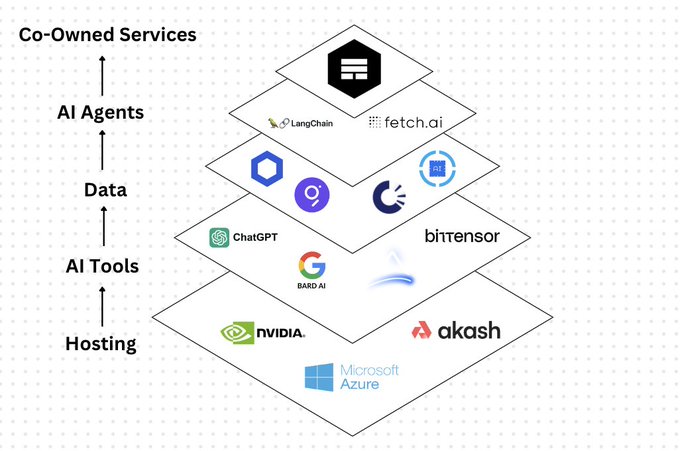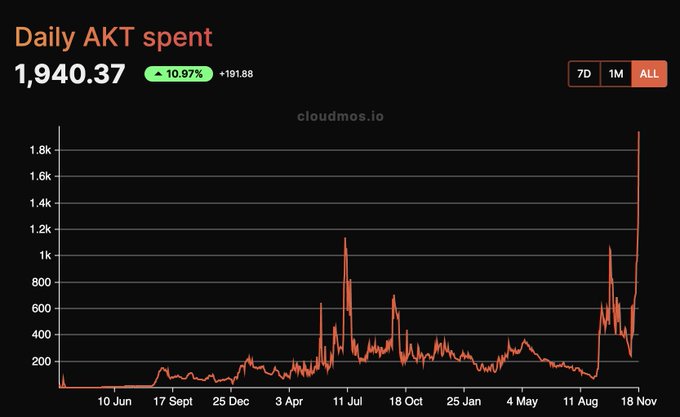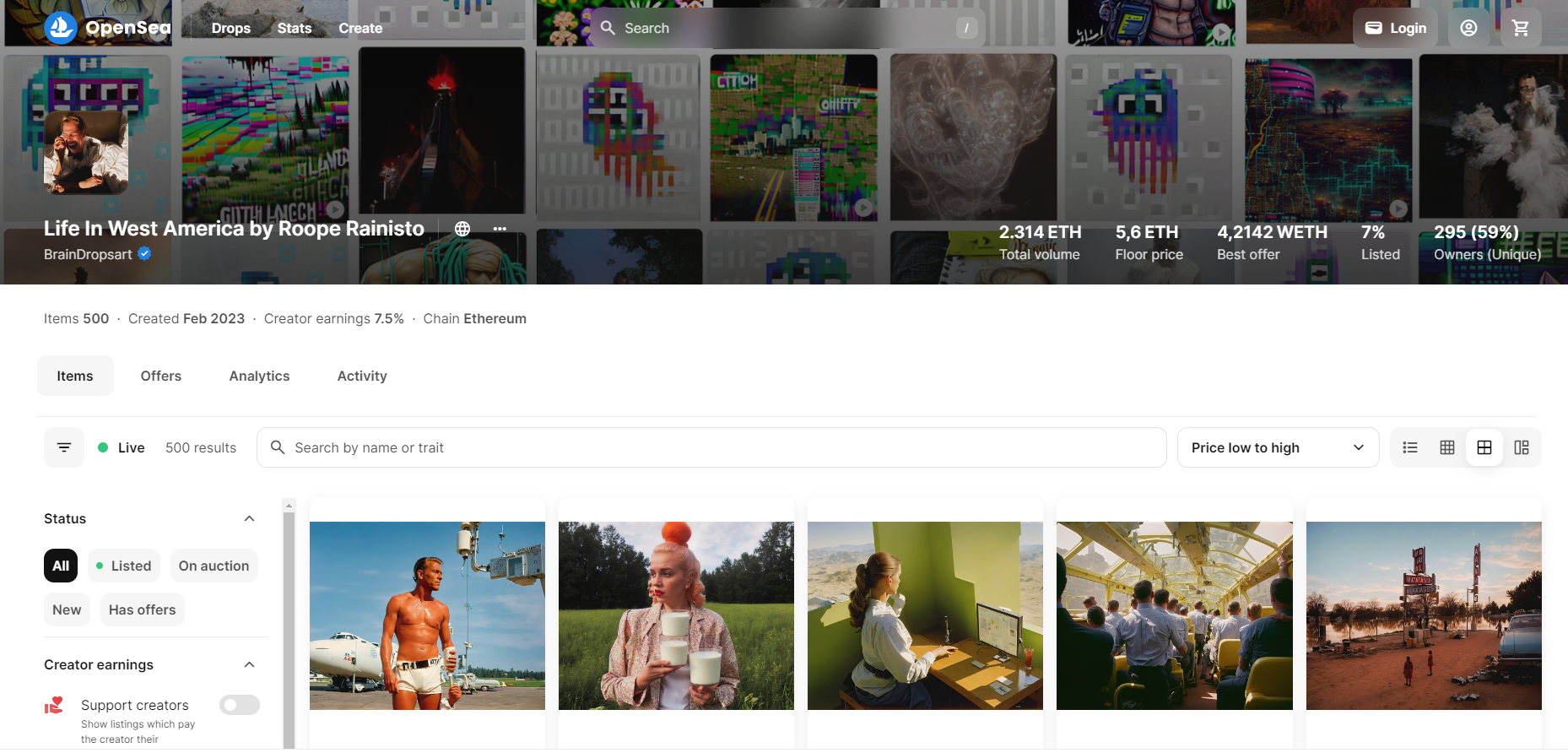AI and NFTs are two rapidly growing technology fields, and their intersection can unlock new values, creating many new functions for NFTs. Let’s learn about the interesting combination of AI and NFTs with Weakhand in this article.
Overview of AI
AI is a field of computer science that aims to create intelligent machines that can perform tasks that typically require human intelligence such as learning, problem solving, perception, etc. At present, AI has been applied in many different fields such as image recognition, natural language processing and Robotics.
The interest and explosion of AI has been even greater in the past year, most of which comes from OpenAI’s ChatGPT platform. It is estimated to have reached 100 million monthly active users in January 2023, just two months since launch. After the boom of ChatGPT, there have been countless AI applications with many different use cases such as:
- Chat Assistant: ChatGPT (OpenAI)
- Music: JukeBox (OpenAI)
- Visual: Midjourney, Dalle – E (OpenAI)
All of these applications bring different conveniences to users and are also opening a new trend in applying AI to the Crypto market.
AI Projects Are Infiltrating the Crypto Market
In the Crypto market at the present time, although the AI segment has not yet been popularized with many user and investor communities, there have been quite a few projects focusing on developing this segment. This has created an AI pyramid consisting of many different layers in which each layer plays an important role in the overall development of the AI segment in the Crypto market.

AI pyramid in the Crypto market
Below we learn about some notable projects in each layer of this pyramid.
Hosting Layer (storage layer) – Akash Network
Akash Network is an open source cloud computing marketplace that allows users to buy/sell computing resources. These GPU resources are crucial for training AI and ML models.
The AKT token is the main token of the Akash Network platform, used to allow users to buy GPUs from others and use them to run applications. It uses a “reverse auction” system that often offers prices up to 85% lower than other cloud systems. The amount of money AKT spends daily to rent computing power is increasing rapidly.

Daily AKT amount for GPU rental
Data Layer – Origin Trail
Origin Trail is a project designed to share trusted data in the form of AI knowledge assets – which are information/IP that can be used to benefit stakeholders.
Origin Trail uses a decentralized knowledge graph (DKG) to publish authenticated information on the Internet through a system of nodes operated to authenticate information before sending it to users.
Modal Layer – BitTensor
BitTensor is a decentralized Blockchain designed to facilitate the development of Machine Learning in the Crypto market. BitTensor includes many subnets (SNs) in which each subnet will focus on a different field. For example, SN 9 focuses on prediction while SN 27 focuses on cloud services. In addition, those who participate in deploying the subnet in the BitTensor generation system will receive a reward of TAO tokens.
Agent Layer – Fetch.ai
Fetch.ai is a platform that uses AI to help people automate daily tasks. Through Fetch.ai’s technology, users can create open services using automation and AI in various fields such as supply chain, finance, travel and prediction.
Fetch.ai aims to innovate the way we live and work by enabling agents to learn, predict, and perform meaningful tasks in the real world.
Service Layer – Autonolas
Autonolas brings on-chain development of AI, allowing the creation of Autonomous services where each Autonomous service is made up of agents, each agent is run by a separate operator. They run continuously, can get data from any source, and can perform complex processing like Machine Learning. Autonomous services can be provided by off-chain AI models such as ChatGPT or on-chain such as BitTensor.
Although at the present time, most AI projects in the Crypto market are highly speculative, with promising applications, AI will bring great benefits in the Crypto market.
The Intersection Between AI and NFTs
After we have briefly learned about the applications of AI in the Crypto market, what will the application of AI in the NFT market look like? In this section let’s look at the opportunities that AI technology can bring to the NFT market.
AI-generated works of art as NFTs
AI algorithms can be trained to create unique pieces of digital art that can be minted as NFTs and sold to collectors. We have witnessed the explosion of generative art NFTs, but generative art NFT works using AI technology to create are still not popular and rarely appear in the media. However, few does not mean none. At present, there are some outstanding NFT generative art works on the market, let’s find out.

Life In West America NFT Collection
Currently the floor price of the collection reaches 5.6 ETH and has been set at the highest level of more than 12 ETH (120 times the original mint NFT price).
There are also a number of other collections of Pindar Van Armen also emerged as a breakthrough in the generative Art NFT revolution. Van Armen uses AI to draw the pieces before assembling them into a complete picture and converting them into NFTs.
NFT Music is created by AI
AI at the present time can do a lot of things besides creating unique artistic photos, they can also be trained to create interesting music that the creator can then code. turned into NFT.
OpenAI’s Jukebox, for example, allows users to create music tracks using AI. The audio clips can then be used and cut into NFTs similar to what Dreamloops had in 2021. Dreamloop NFTs are a collection of pixel art-based NFTs with playable classical music saved per NFT.
AI can be applied to NFT Marketplaces
AI algorithms can be used to analyze buyer needs and from there NFT Marketplace platforms can recommend suitable NFT collectibles to buyers. Additionally, AI can be used to value NFTs based on market trends and historical data.
NFT trading and analytics tools have evolved rapidly since the NFT boom of 2021. It is not surprising that AI is applied to optimize for valuations, market trends, and a Some other parameters of the NFT collection.
In addition, another application of AI in NFT trading is to use Machine Learning to analyze large data sets of past trading volumes and floor prices to identify patterns and predict future market trends. future.
Applying NFT and AI to gamefi games
AI and NFTs can be used together to create all kinds of rich interactive experiences in gamefi games. For example, an AI-powered virtual assistant could be programmed as an NFT to interact with players in a virtual world, creating an enjoyable experience for each individual within that Metaverse.
In addition, NFTs are also used to represent AI-controlled digital assets. This can bring variation and surprise to players in the game.
Predicting Future Trends
We are witnessing an explosion of AI with the prominent name ChatGPT. Three months to reach 100 million users is the fastest of any technology in history. The current explosion of AI has paved the way for its application in other fields, and NFTs are a typical example.
With the recent emergence of AI for images from Dall-E 2 or Midjourney. We are seeing more NFT versions with AI-drawn images, which could create a new trend and become a trend in the NFT market like what the animal avatar trend appeared in 2021. The pioneers of this movement may retain their value, but the fomo projects that follow will have their collections die over time.
summary
AI and NFTs offer a very special combination and bring many benefits in different ways. Above is all the information that I want to introduce in this article, hope everyone has received useful knowledge.


